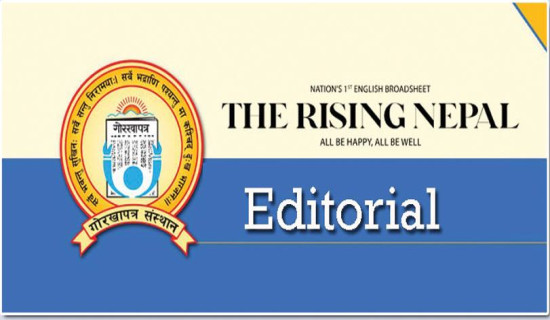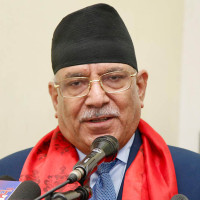- Thursday, 21 August 2025
Paradigm Shift In Mental Health
Something strange is happening in Nepal—and it’s not on the streets, it’s in the silence.
Young people are quietly turning away from temples and turning towards therapy. While older generations still find solace in rituals, incense, and religious retreats, Gen Z is lying on couches, journaling emotions, or texting their therapists mid-anxiety spiral. Some of us are finding healing not in mantras, but in mental health apps, music of our loved artists on streaming platforms, trauma worksheets, and podcasts about inner child wounds. And this isn’t about disrespecting faith. It’s a response to pain.
For decades, our culture told us prayer cures everything. That sadness should be swallowed, anger should be hidden, and grief should be passed off as karma. Speaking to a stranger about your mental health? Taboo. Wanting boundaries in your own house? “Disrespectful.” Having panic attacks? “Too sensitive.” We grew up with spiritual bypassing wrapped in sugarcoated shame. But today’s youth is saying, “Enough.” We’re not here to blindly inherit trauma and call it tradition. The trauma isn't singularised here; it's generational with hundreds of contributors. We’re done apologising for needing help. We’re done being gaslit by silence.
Nepal’s mental health crisis is no longer silent. Suicide is one of the leading causes of death among young people; how is that data not concerning enough already? Burnout, body dysmorphia, and emotional numbness—they’re becoming common vocabulary in our daily lives. But while elders chant mantras, we’re trying to untangle generational trauma with the language we were never taught to speak: feelings.
Going to therapy isn’t just a personal decision anymore—it’s political. It’s a soft rebellion. A refusal to accept that suffering quietly is strength. A protest against households where emotions are dismissed with a “You’re just overthinking.” A resistance to being told, “Pray, and everything will be okay,” when we’ve already prayed ourselves into exhaustion.
Therapy offers what religion sometimes doesn’t—dialogue. It doesn’t give you commandments; it gives you context. It doesn’t demand obedience; it encourages introspection. And for a generation drowning in emotional noise, that space to pause and reflect is sacred in itself.
This shift doesn’t mean we’re abandoning culture. It means we’re rebuilding it. We’re trying to create a world where healing is allowed, where vulnerability isn’t mocked, where crying isn’t weakness, and where going to therapy isn’t whispered like a scandal.
Maybe the temple and the therapist can coexist. Maybe both paths have value. But if we’re being honest, only one is helping us navigate the chaos in our heads in real time. Only one is meeting us where we are—unfiltered, messy, scared, and raw.
This generation isn’t faithless. We’re just faith-fatigued. We’re searching for meaning in a world that’s already heavy with expectation. And if therapy is where we find peace, then so be it.
Because healing shouldn’t be a privilege. It should be a right. And for many of us, the therapist’s couch feels more like a place of worship than any altar ever has. We’re not turning our backs on tradition. We’re turning towards ourselves. And that, too, is sacred.















